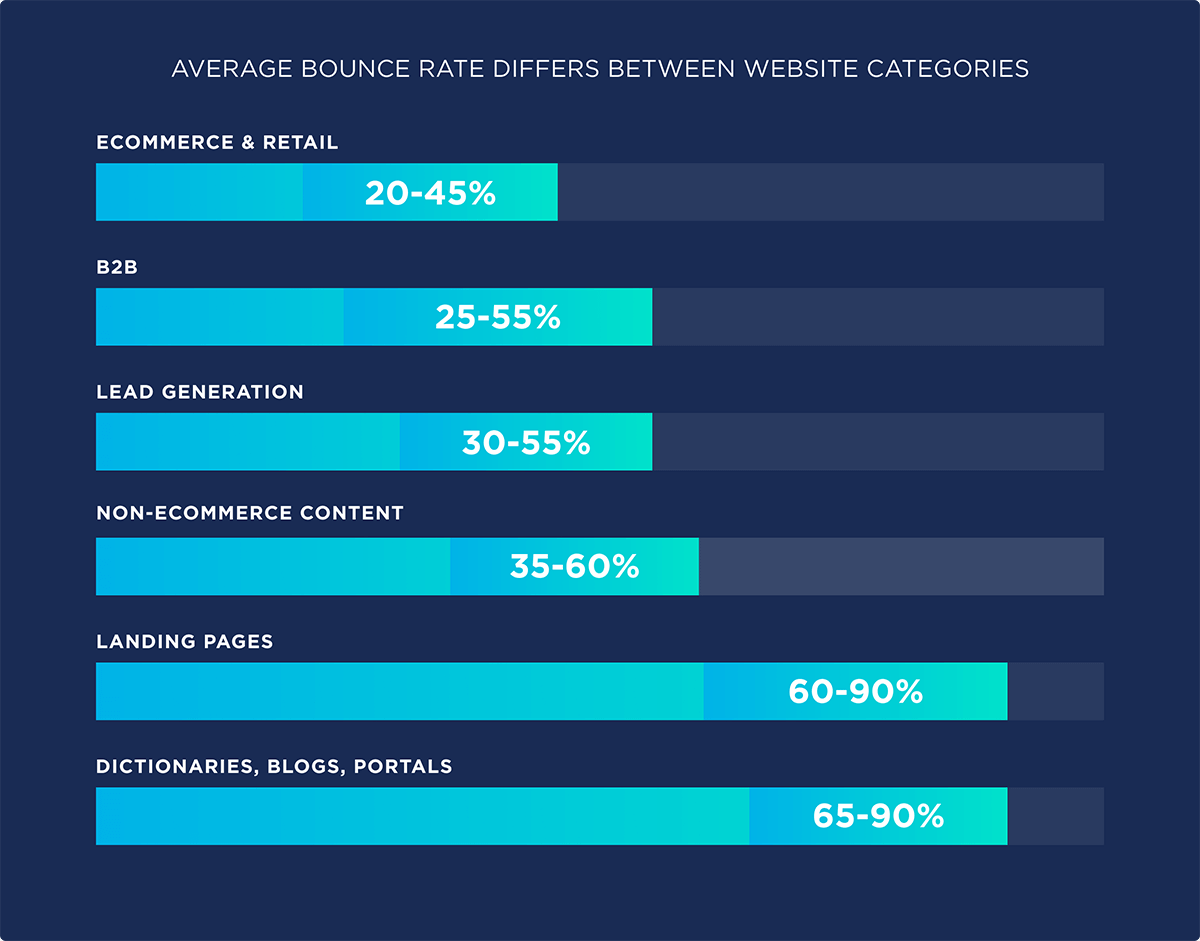Bounce rate and exit rate are like two sides of the same coin, both dealing with when and why people leave your website but from slightly different angles. Let’s dive in:
Bounce Rate is all about first impressions. It measures the percentage of visitors who land on a page and decide to leave without visiting any other pages. Think of it as someone knocking on your door, taking a peek inside, and then deciding not to come in. A high bounce rate might mean that your landing page isn’t doing a great job at keeping visitors interested. Maybe the content doesn’t match what they were looking for, or it’s not clear what they should do next. This is crucial for digital marketing because it gives clues on how to make the landing page more engaging or relevant.
Exit Rate, however, is a bit different. It focuses on the last page people visit before they say goodbye. Unlike bounce rate, it considers visitors who might have browsed through several pages before deciding to leave. This metric helps you understand where in their journey users tend to drop off. It’s like tracking where most guests decide to leave a party. It offers insights into which pages might need a makeover to make sure visitors stick around longer or complete a desired action, like making a purchase or signing up for a newsletter.
Together, bounce rate and exit rate give you a fuller picture of how visitors interact with your site. They help identify not just the problematic pages but also opportunities to enhance the overall user experience and keep visitors engaged longer.
Understanding Bounce Rates and Exit Rates
Contents
To effectively measure and improve a website’s performance, one must understand two critical metrics: Bounce Rate and Exit Rate. Both offer insights into user behavior but focus on different aspects of their interaction with a site.
Defining Bounce Rate
To really get a handle on how well a website is doing, it’s key to get to grips with two important numbers: Bounce Rate and Exit Rate. They both shed light on how people use a site, but they look at different things.
What’s Bounce Rate?
Think of Bounce Rate like a measure of first impressions. It’s all about how often people land on one of your site’s pages and then just take off without looking around. In Google Analytics, this rate shows you the share of all the visits that were just one-and-done. If a lot of folks are bouncing, it might mean your page isn’t giving them what they expected or it’s not catchy enough to stick around.
What About Exit Rate?
Exit Rate is a bit different. It’s not just about the first page someone lands on. Instead, it tracks the last page people check out before they say goodbye to your site. It could be after they’ve browsed a bunch or just a single page. This number gives you clues about where on your site people decide they’re done. A page with a high Exit Rate isn’t necessarily a problem—maybe it’s just the natural end of their journey—but it can point out spots where your site might be losing interest.
In short, Bounce Rate helps you see how well your landing pages hold attention, while Exit Rate reveals where people are wrapping up their visits. Understanding both can help you make your site more engaging and effective.
Differences Between Bounce Rates and Exit Rates
Calculating Bounce and Exit Rates in Google Analytics
Calculating these metrics in Google Analytics is straightforward. Bounce Rates are calculated by dividing the number of single-page sessions by the total number of sessions—all within a given timeframe. For Exit Rates, take the total number of exits from a page and divide it by the total number of pageviews for that page. These percentages can then be interpreted to guide content and UX improvements.

Optimizing for Better User Engagement and Lower Bounce/Exit Rates
To lower bounce and exit rates, focus on these key areas: content, user experience, technical performance, and understanding user actions.
Improving Content Quality
Create engaging, high-quality content to keep users interested. Update information often, especially on landing pages, to keep things fresh. For online stores, accurate product descriptions are essential. Good content draws users in, helping them move smoothly through your site.
Make your website easy and intuitive to use. Clear calls to action should guide users on what to do next. Websites must work well on mobile devices too, as lots of people browse on their phones. Tools like heat maps show how users interact with your site, providing clues on where to improve.
Speeding Up Your Site
A fast-loading website keeps users from leaving. Optimize images and code to speed things up. Make sure every part of your site works well to avoid frustrating your visitors. Regular checks for SEO and technical health can also improve your site’s performance and popularity.
Understanding How Users Behave
Analyze where your visitors come from and what they do on your site. This information can help you make each step towards buying or signing up smoother and more appealing. Look into why people might leave at certain points and fix those issues to keep them engaged longer.
By focusing on these strategies, you can make your website more appealing, keep people interested longer, and ultimately improve your site’s effectiveness.






Leave a Comment